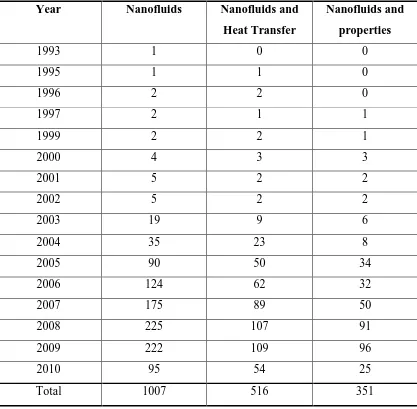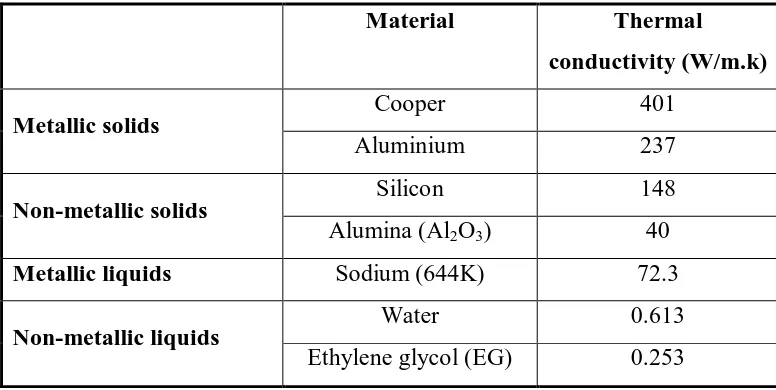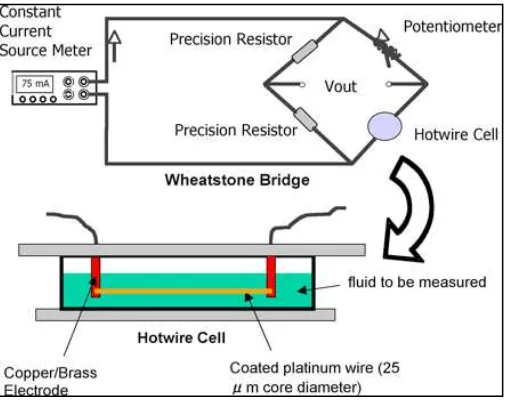PERFORMANCE OF A CONDENSER WITH COOPER OXIDE (II) NANOPARTICLES SUSPENDED INTO HOST REFRIGERANT
ERIC JAU JEFFREY
This report is submitted in order to fulfill a part of the requirements for award of Degree in Bachelor of Mechanical Engineering (Thermal-Fluid)
Faculty of Mechanical Engineering Universiti Teknikal Malaysia Melaka
sufficient in terms of scope and quality for achieving award of Degree in Bachelor of Mechanical Engineering (Thermal-Fluid)”
Signature : ………..
i
“I hereby declared that this report and all that comes with it is my own work, except the ideas and summaries in which I have clarified their sources”
Signature : ………..
iii
ACKNOWLEDGEMENT
First of all, I would like to thank our God Almighty for the blessings and love that He gave to me throughout my time on completing this project and also to the people who have helped me. Amen.
I’d like to thank and give appreciation to my supervisor, Puan Fadhilah bt Shikh Anuar for the continuous support and assistance, relentless guidance and lots of advice and encouragement along the way of completing this progress report.
Also, I would like to thank my fellow classmates in which without them, my work won’t go as smoothly as needs be. It is my appreciation to all of you for sharing your opinions in this project.
ABSTRACT
v
ABSTRAK
CONTENTS
CHAPTERS TITLE PAGES
DECLARATION i.
DEDICATION ii.
ACKNOWLEDGEMENT iii.
ABSTRACT iv.
ABSTRAK v.
CONTENTS vi.
LIST OF TABLES viii.
LIST OF FIGURES ix.
LIST OF ABBREVIATION x.
CHAPTER 1 INTRODUCTION
1.1 Background 1
1.2 Objectives 2
1.3 Scope 2
LIST OF TABLES
NO. TITLE PAGES
2.1 Number of papers on “nanofluids”, “nanofluids and heat 6 transfer” and “nanofluids andproperties” by SCOPUS
database.
2.2 Thermal conductivity of various solids and liquids 11 2.3 Analytical models on thermal conductivity of nanofluid 15 3.1 Physical properties of cooper (II) oxide (CuO) nanparticle 20
3.2 Compositions of R-407C 21
3.3 Theoretical performance comparisons 21
ix 4.5 Temperature contour of nanorefrigerant at volume fraction 36
1%
4.6 Temperature contour of nanorefrigerant at volume fraction 36 2%
4.7 Temperature contour of nanorefrigerant at volume fraction 37 3%
4.8 Temperature contour of nanorefrigerant at volume fraction 37 4%
NOMENCLATURE
ϕ = Volume fraction
U = Overall heat transfer coefficient h = Heat transfer coefficient
T = Temperature
Ai = Inner area Ao = Outer area
K304L = Thermal conductivity of stainless steel 304L (condenser)
x = Length
Di = Inner diameter
Kp = Thermal conductivity of nanoparticle ρp = Density of nanoparticle
dp = Diameter of nanoparticle
Kbf = Thermal conductivity of base fluid ρbf = Density of base fluid
Knf = Thermal conductivity of nanofluid μnf = Dynamic viscosity of nanofluid hnf = Heat transfer coefficient of nanofluid Nunf = Nusselt Number of nanofluid
1
CHAPTER 1
INTRODUCTION
1.1 Background
Due to the immense applications of heat transfer in many industries, wanting to increase the efficiency of heat exchanging equipments has become the main purpose for designers of industrial places. In recent years, different approaches have been created by researchers of attempting to enhance heat transfer. Increase the efficiency and improvement of the output of thermal devices can cause energy savings and indirectly decrease the equipment sizes and initial and operation costs (Xuan and Li, 2000a). Unfortunately, most used approaches to achieve this aim is by increasing the equipment’s surface area per volume unit and therefore increase the equipment size which leads to increase in pressure loss. As a result, powerful pumps are needed and this leads to higher energy consumption. What the industry wants is to have a better efficiency and also having the equipments run with constant energy consumption or maybe even lesser.
advancement of thermal field and nanotechnology, researchers are encourage to do more research on nanofluid following major trend in modern science and technology which is miniaturization industries.
1.2 Objectives
i.
To investigate the effect of cooper (II) oxide nanoparticle with volume fraction as its variable on Nano-refrigerant thermal conductivity.ii.
To study the effect of nanoparticle volume fraction on dynamic viscosity of the nanorefrigerant.iii.
To investigate the heat transfer performance of a condenser using nanorefrigerant.1.3 Scope
3
1.4 Problem Statement
CHAPTER 2
LITERATURE REVIEW
2.1 Nanofluids
Nanofluids are a new type of nanotechnology-based heat transfer fluids that are engineered by dispersing and stably suspending nanoparticles with average length of 1–50 nm in conventional heat transfer fluids. The author, Choi (1995) coined the term nanofluids for this new class of heat transfer fluids.
It should be known that the modern science and technology, “size does matter”. Maxwell’s concept of enhancing the thermal conductivity of fluids by dispersing solid particles is old, but what is new and innovative with the concept of nanofluids is the idea of using the nanometer-sized particles that have become available to investigators only recently.
5
For the past decade, many scientists and researchers have made many amazing discoveries that a very small amount (<1 vol %) of guest nanoparticles that is hosted in fluids can provide big improvements in the thermal properties. For example, some nanofluids show evidence of improved thermal properties such as high thermal conductivity at low nanoparticle concentrations, strong size-dependent thermal conductivity, a nonlinear relationship between thermal conductivity and concentration, and a threefold increase in the critical heat flux at a small particle concentration.
Nanofluids have an increasing interest by researchers because these unique thermal transport phenomena that goes beyond the fundamental limits of conventional macroscopic theories of suspensions. For that reason, several mechanisms and models have been proposed to make a more thorough discovery for these unexpected, fascinating thermal properties of nanofluids.
7
2.2 Nanorefrigerant
Nanorefrigerant is one kind of nanofluid and the host fluid of nanorefrigerant is any type of refrigerant. The thermal conductivity of nanorefrigerant should be studied in order to improve the performance of refrigeration systems. The stability of nanorefrigerant should be known in order to keep the nanorefrigerant’s long-term operation in the system.
The nanopowders would diffuse and enter the fluid in the system because of the application of nanorefrigerant. So the electrical conductivity of nanofluid in the system will increase because of the nanopowder’s high electrical conductivity. The nanofluid’s electrical conductivity should be researched to ensure the insulating properties of system. For this purpose, the experimental and model research is given to nanorefrigerant’s thermal conductivity, stability and nanofluids’ electrical conductivity. The main contents include:
a. Thermal conductivity of nanorefrigerants containing Cu, Al, Ni, CuO, Al2O3 and CNT are measured. Experimental results show that the nanorefrigerant’s thermal conductivity increases enormously with the increase of nanoparticle volume fraction. The influences of nanopowder’s material and physical dimension on nanorefrigerants’ thermal conductivity are analysed.
b. The thermal conductivity model for nanorefrigerants containing nanoparticles, the thermal conductivity model for nanorefrigerants containing nanotubes and the general thermal conductivity model for nanofluids are proposed. Such three models are verified by experimental results. It shows that the three models are better than the other existing models and can be recommended for nanofluids, especially for nanorefrigerant.
The model is verified by experimental results. It shows that the model can predict the transmissivities of some nanorefrigerants quantificational and predict the transmissivities of other nanorefrigerants qualitatively.
e. Electrical conductivity of nanofluid, i.e. nanorefrigerants and nano-oils containing Cu, Al, Ni, Al2O3 and CNT, are measured. Experimental results show that the nanofluids’ electrical conductivity increases with the increase of nanopowder volume fraction. However, the nanorefrigerants’ and nano-oils’ electrical conductivity is still in line with the national standards and the nanorefrigerants and nano-oils have excellent insulating performance. The influences of nanopowder’s material and physical dimension on nanofluid’s electrical conductivity are analyzed.
f. The electrical conductivity model for nanofluids containing nanoparticles, the electrical conductivity model for nanofluids containing nanotubes and the general electrical conductivity model for nanofluids are proposed. Such three models are verified by experimental results. At last, some deficiencies were pointed out in the paper and some further researches were planned.
2.3 Heat Transfer
9
determine thus the times need of heating and cooling as well as the variation can be known either through experimental method theoretical method with some assumption need to be done first.
The conventional method for enhancing heat transfer in a thermal system consists of increasing the heat transfer surface area as well as the flow velocity of the working fluid. The dispersion of solid nanoparticles in heat transfer fluids is a relatively new method. Extended surfaces such as fins and microchannels (width <100 �m) have already been used to increase the heat transfer surface area. Their performance in effectively removing as much as 1000 W/cm2
has shown a great improvement in the area of cooling. However, further development of this technology is at a standstill because it has already been pushed to its achievable limits. Thus, attention is now turning towards the dispersion of solid particles in fluids. Improving heat transfer characteristics in refrigeration and air conditioning systems has been intensively studied by many investigators.
Increased thermal conductivity will result in higher heat transfer than that of the base (pure) fluid without dispersed nanoparticles. Measurements of the heat transfer coefficient of nanofluids have shown that heat transfer capability if water increased by 15% with a dispersion of less than 1 vol. % copper oxide nanoparticles (Zussman, 1997). Recently, there are about 80% improvements in heat transfer with the dispersion of less than 3 vol. % alumina nanoparticles. It should be noted that the observed heat transfer rates of nanofluids are much higher than those predicted by conventional heat transfer correlation, even when changes in thermophysical properties such as thermal conductivity, density, specific heat and viscosity are considered. It appears that the effect of particle size and number becomes predominant in enhancing heat transfer in nanofluids.
2.3.1 Convective Heat Transfer in Nanofluids
applications. However, even though their efforts showed that particles did increase the heat transfer properties of their base fluids, they could not overcome problems caused by the large size of the particles. It was not until the advent of nanotechnology that the thought of nanoparticles came about.
2.4 Thermal conductivity of nanofluids (CuO)
It is well known that at room temperature, metals in solid form have orders-of-magnitude higher thermal conductivities than those of fluids (Touloukian et al., 1970). For example, the thermal conductivity of copper at room temperature is about 700 times greater than that of water and about 3000 times greater than of engine oil.
11
Table 2.2: Thermal conductivity of various solids and liquids
Material Thermal
Metallic liquids Sodium (644K) 72.3
Non-metallic liquids
Water 0.613
Ethylene glycol (EG) 0.253
Numerous theoretical and experimental studies of the effective thermal conductivity of dispersion that contain solid particle have been conducted since Maxwell’s theoretical work was published more than 100 years ago (Maxwell, 1873). However, all of the studies on thermal conductivity of suspensions have been confined to millimetre or micrometre-sized particles then. The major problem with suspensions containing millimetre and micrometer-sized particles is the rapid settling of these particles. Furthermore, such particles are too large for micro systems.
Existing theories in nanofluids cannot fully explain the observed increase in thermal conductivity. Therefore there is a need to come up with a better analytical model which captures the underlying physics accurately. Researchers have been working to develop a model to find explaination of the increase and then possibly design fluids with enhanced thermal conductivity.
Figure 2.1: The transient hotwire method
Figure 2.2: Experimental system for nanofluid measurements
Due to the applications of suspended nanoparticles in a base fluid, the thermal properties of nanofluids have been continually studied in the last decade. Various nanoparticles and base fluids are applied to fabricate different kind of nanofluids. Former experimental data have shown that nanofluids have higher thermal conductivity than that predicted by the conventional models like Maxwell model. However, the conventional models did not consider the effects associated with Brownian motion. This may cause the underestimation to the thermal conductivity of nanofluids. New models included the effects associated with Brownian motion are getting more investigated in the recent years.


